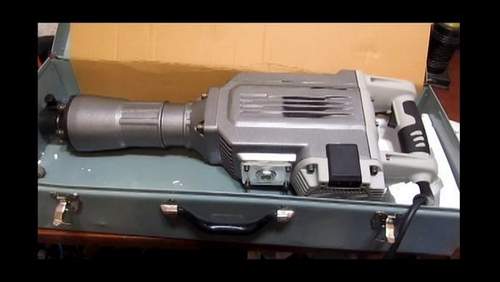These instructions must be studied by the operator before operating the pneumatic wrench. To be accessible and understandable to personnel operating the tool, maintenance personnel (service) and safety controllers.
1. PURPOSE
The pneumatic wrench is designed for tightening and loosening threaded joints during the assembly of metal structures, machine tools, bridges and tunnels, etc. where high performance and reliable connections are required. The accuracy of the tightening torque during the operation of a pneumatic wrench depends on the degree of wear of the wrench, the quality of compressed air and the correct construction of the pneumatic network, and on the skill of the operator.
2. SAFETY AND LABOR HYGIENE REQUIREMENTS
The operator, before starting work, must undergo appropriate training and accurately get acquainted with the "SAFETY REQUIREMENTS".
- Wear safety glasses.
- Always disconnect the tool from the compressed air network before replacing the impact heads, making any adjustments to the tool, or before preserving the pneumatic wrench.
Failure to do so may result in personal injury.
- Use hearing and vision protection in an environment where this is necessary.
- Use protective gloves.
- Use a wrench only as intended.
- Do not exceed mains pressure to increase tightening torque. This increases the wear of the pneumatic wrench and leads to a loss of warranty.
- Do not block the start lever in the “work” position.
- The operator’s workstation must be free of foreign objects that could result in a fall. Should be well lit.
- Do not work with damaged hoses, monitor their condition.
- Remember that a wrench does not protect against electric shock.
- Provide easy access to compressed air shutoff taps in the event of an accident or hose rupture.
3. PREPARATION FOR WORK
- Before starting work, the air connection must be tightly connected to the compressed air supply hose and clamped with a hose clamp.
- Before connecting the wrench to the compressed air network, it is recommended to blow out the hose to remove water and other contaminants. Use hoses with a length of 10.15 m; a longer length causes a pressure drop that reduces impact energy.
- If necessary, use longer hoses, first use a larger diameter hose, and then with the recommended diameter.
- Connect the fitting to the hose and tighten securely with a hose clamp.
- Check that the start lever is not locked in the working position and only after that supply compressed air.
Video: Where To Pour Oil Into A Hammer
4. LUBRICATION
It is recommended to work with dry compressed air with the creation of oil mist.
Adequate lubrication of the wrench during operation is necessary in order to ensure its high survivability and reliability.
Given the intensive use of a pneumatic wrench, lubricating oil should have properties that prevent wear and excessive heating of rubbing elements, the formation of rust and other oxidation products.
Recommended oils that fulfill the above requirements: PNE32 by Lotos and Shell Torcula 32
The drip of the oil preparation unit of the air preparation must be set at the level of 3-4 drops per 1m³ at the maximum air flow rate. The distance of the preparation unit from the hammer is not more than 7 meters. In exceptional cases, when the network does not have an oiler, be sure to pour 2-4 ml of recommended oil into the tool through the compressed air supply pipe every day before starting work. You must repeat this action every 2 hours of operation of the device.
It is absolutely necessary to observe this instruction.
Detection during warranty repairs that the wrench worked without lubrication will be the reason for the loss of warranty.
5. WORK
- After assembling all the elements (paragraph 3), install an impact head of the required size on the spindle.
- The wrench starts after connecting it to the compressed air network by pressing the lever (key 38),
- During operation, the wrench must be confidently and firmly held in hands, exerting pressure directed towards the curled surfaces, the pressure is carried out in the range of 150. 200 Newton (comparable to how an adult leaned on the table). Do not exert excessive pressure. this does not increase productivity.
- The optimum tightening torque is achieved in 5-7 seconds after touching the nut of the rolled surfaces. Do not keep the wrench in the loaded state for a long time, this leads to premature wear of the impact mechanism.
- Be careful. beware of the reactive effect.
- Efficient and productive wrench operation requires the skill of the operator.
- Do not allow the “idle” operation of the wrench; this leads to failure. Do not direct the wrench with the working tool installed in it at yourself and other people. Do not overheat the impact zone of the tool.
- Do not use a wrench like a hammer.
At the end of the work, turn off the compressed air, disconnect the sleeve from the wrench, and plug the compressed air inlet with a plug so that dirt does not enter the wrench.
6. INSPECTIONS AND REPAIRS
ATTENTION: All inspections and repairs should be carried out only after disconnecting the device from the compressed air network.
